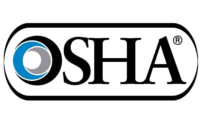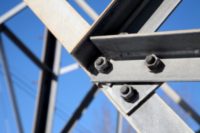Listen up: OSHA establishes regional emphasis program to protect Midwest workers' hearing

Twenty-two million workers are exposed to hazardous occupational noise each year, a figure nearly equivalent to the population of Florida.
To reduce noise hazards and protect workers’ hearing, the U.S. Department of Labor’s Occupational Safety and Health Administration’s Kansas City regional office has established a Regional Emphasis Program. The program will target inspections of general industry and construction workplaces at high risk of noise exposure and raise awareness of hazards and safety measures among Kansas, Missouri, and Nebraska employers.
"Hearing Conservation Programs require employers to measure noise levels, provide free annual hearing exams and hearing protection, offer training, and conduct evaluations of the adequacy of the hearing protectors in use", says Tim Turney, Global Marketing Manager at occupational hygiene and environmental expert Casella.
"The programs cost around $350 per worker each year, necessitating $70,000 annually for a 200-strong workforce. They are mandatory until the employer makes sufficient changes to the tools, equipment and schedules used so that conditions are improved, and worker exposure is demonstrated to be less than the 85 dBA."
OSHA's new Regional Emphasis Program involves an initial outreach phase that encourages employers to address and correct hazards, followed by targeted inspections to ensure employers are taking necessary steps to reduce noise hazards and prevent injuries to their workers.
Tim Turney, comments, "Any sound over 85 decibels(dB) can damage hearing, meaning the operation of concrete mixers, forklifts, jackhammers, nail guns and masonry drills all pose a permanent risk to worker health if effective control measures are not put in place. A noise survey can help employers determine which employees are at risk."
"The survey should list employees and their exposure, then compare their exposure to the maximum PEL. In line with the OSHA regulations, hearing protection should be made available to employees exposed to noise dose levels above 85dB(A). The noise dose is based on the sound exposure level and duration, so for each increase 5-dB in noise levels, the duration of the exposure should be cut in half. "
"Noise monitoring provides accurate insights into the noise levels of a working environment so that businesses can identify at-risk employees and ensure they adhere to OSHA regulations. However, professionals undertaking the monitoring should be trained and prepared sufficiently with the right equipment as minor errors in noise level estimates can lead to major errors in exposure calculations."
"Measurement of sound or unwanted sound (noise) encompasses a vast range of decibel levels and many diverse applications. The goal of measurement is to assess an individual’s eight-hour exposure, so the noise monitoring process itself may be a quick measurement using a sound level meter if the noise is steady throughout the day. Alternatively, a more comprehensive use of multiple noise dosimeters on many people over several days may be required, depending on the variation in exposure and number of employees."
"Noise-induced hearing loss is more common than diabetes or cancer. Employers have a responsibility to prevent damage to their workers’ health and to upskill their workforce, so they realize the implications of damaging noise exposure."
Looking for a reprint of this article?
From high-res PDFs to custom plaques, order your copy today!





